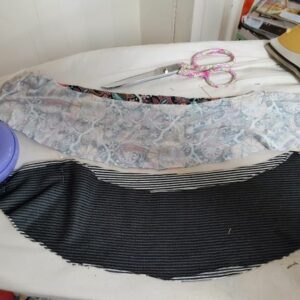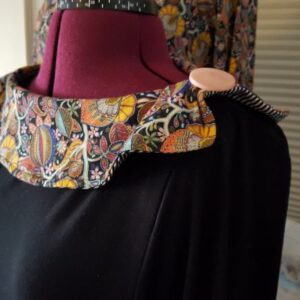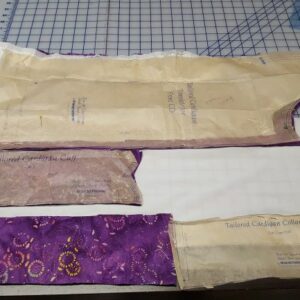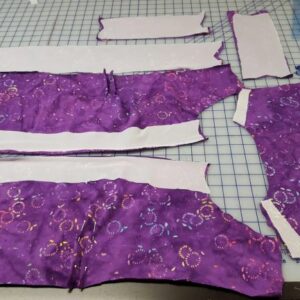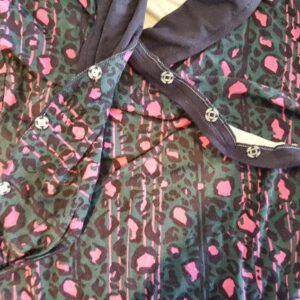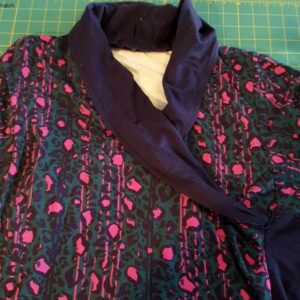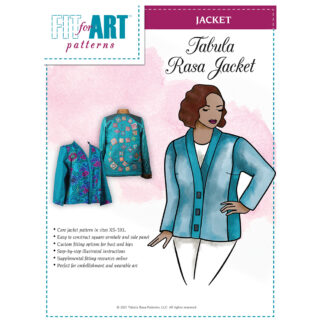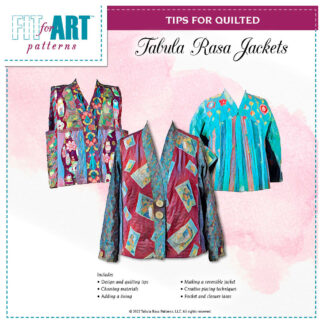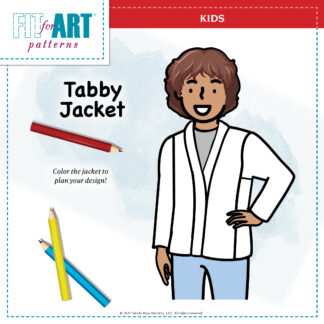
Sewing fashionable knit garments has been a Fit for Art goal for many years. We are constantly pushing the design envelope with the core Tabula Rasa Knit Tee & Tunic pattern (TRK), so far adding three variations to change up the look of the basic knit top adjusted for your personal fit.

When the knit pattern hit the market, we also introduced the Interfacing Sampler for Knits & Fine Fabrics to help you support knit garments successfully. The same two fusible interfacings are also included with two heartier interfacings in our basic Interfacing Sampler. Well placed and well-chosen interfacing enhances the over all shaping of your DIY knit tops and extends their life for years of wear. (Read more about interfacing in woven tops, too, in this blog post.)
Where does the Interfacing Go?
As a preview to my Mix Up the Perfect Fabric Cocktail class hosted by OSQE on January 27, let’s look at where interfacing can be used to support your fashionable knit creations and how to choose the best product for your project.

Here are a pair of knit tops that share the same fabrics. They each feature our basic black rayon jersey and a lovely printed rayon blend jersey from Liberty of London. It was a gift from a friend who purchased it at the Liberty Store in London. (If you have never been there and are heading to London when travel is again possible, put it on the top of your to do list: a historic building filled with lovely fabrics and more.)
In a Basic Top
In a basic Tabula Rasa knit top, such as the Print top on the dress form (which is one of my favorite TRKs), we use small strips of interfacing in the shoulder seam to keep the shoulders from stretching. Read about the placement and the importance of pressing and finishing these seams open to keep the neckline bump free in the post Sew Successful Knit Tops.

In Wide Neckline Variatons
I used the Liberty of London fabric leftover from my basic Tee to create the Wide Neckline Variation top with a Curved Collar for my friend who gifted me the fabric. The solid black jersey tee is set off beautifully with the printed collar and cuffs. Because I did not have much fabric, I lined the collar and cuffs with a black and white stripe jersey. Where do you think the interfacing is hiding in this fabulous top?
As directed in the Wide Neckline Variation pattern, the neck edge into the shoulders is interfaced all around with Envy Silk interfacing cut in the least stretchy direction. Jersey knit needs to be well supported to stand up to a two-layer collar and keep the neckline from stretching out.
There is also interfacing in one layer of the collar. Because the stripe was the lightest weight knit being used and it was to be underneath, rarely to be seen, I interfaced it also with Envy Silk. I had made a small sample of the two collar fabrics stitched together and topstitched to assess the need for interfacing. I chose to put the interfacing on the collar, but not on the cuffs which can swing freely.
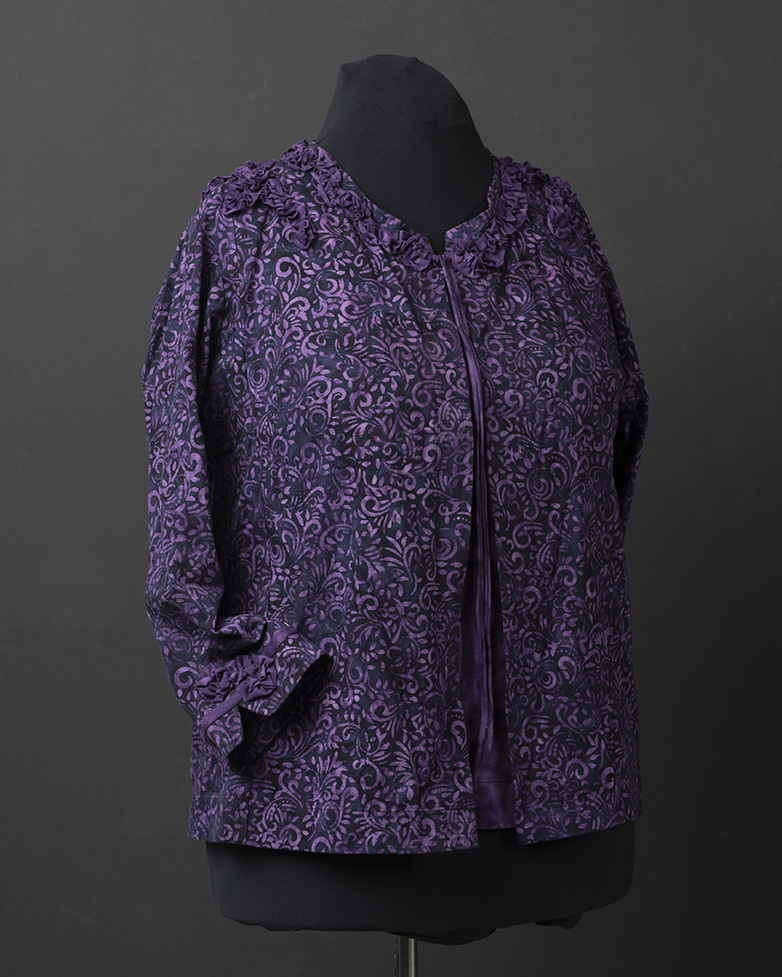
In Twin Set Variations
In this SewBatik cotton jersey Tailored Cardigan from Twin Set Variations, I have placed the interfacing in the collar and cuffs as well as down the center front where the cardigan folds back to form a 1¾” finished edge. The addition of Envy Silk interfacing helps these cardigan edges stay crisp and will support them over time. In the photos below you see a new SewBatik Jersey Tailored Cardigan being prepared for construction demonstrating how I cut the interfacing so as not to waste any.
Read more in this Tailored Cardigan post. As always, make a sample to test interfacing with a scrap before cutting.

In Clever Crossing Variations
Finally, we come to the Clever Crossing Variations. I did not interface the criss-cross neckline in this Surplice top as the seam in the band finish will be enough to keep it stable. Later I wanted to add a detachable Cowl collar to this top. The cowl collar would usually sit in the place where the band is finishing the top. By adding a strip of soft stretch interfacing along one long side of the collar, it is able to support the snaps I used to attach the detachable collar.

It also adds shape to the unattached collar and allows it to be successfully snapped on and off depending on the weather and my mood. I chose Soft Stretch interfacing because it adds a bit of loft to the fabric and I wanted the collar to have plenty of volume.
(Love this fabric? There are still a couple of knit bundles with this great animal print and its solid navy blue companion.)
Become Support Savvy
When you are sewing garments, especially knits, having the right interfacing to provide support for the fabric while not stiffening or altering the drape of the knit is essential. Join me for my Fabric Cocktail class to learn more about interfacings, underlinings and linings for knits and woven fabrics. Using these tools appropriately will help you Sew Successfully every time!


